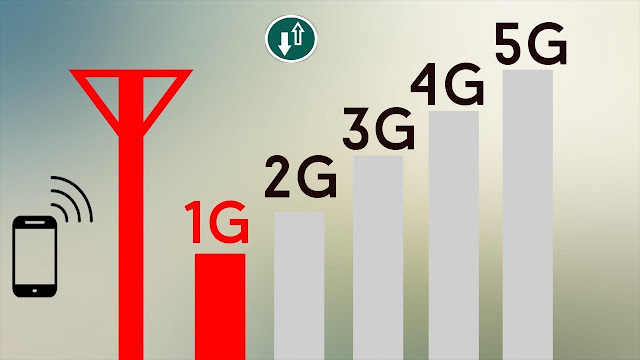 |
| What is 5G NR? All You Need To Know About The New Radio 5G Mobile Network. |
It took some time, but it is finally here the first 5G spec has finally been approved late last year 2017. 5G NR, is what it is called, and it will bring to us super fast mobile internet by exploiting a whole new spectrum.
We will hopefully be seeing the first 5G-ready smartphones in the first half of next year 2018, though most people won't benefit from this new technology until about the year 2020. The 5G NR promises to greatly increase cellular internet speeds and still enable experiences like always being connected on laptops or streaming live from VR headsets. The whole industry is going mad for it, so to help you make sense of the hype here is a little guide.
5G meaning the fifth generation of mobile network standards as set by the 3GPP, the organization setting the rules for every company that operates in cellular communications. The official name NR, means New Radio. The has the same use as "LTE" is today, that is to differentiate it from previous versions.
As 3G took the internet everywhere and 4G LTE made it run faster, 5G NR is to greatly boost both the strength and speed of networks, bringing to you your high-res cat videos and 4K VR livestreams in no time.
5G is going to enable this by tapping into new and unused bands which on top of the radio spectrum known as millimeter waves (mm waves). These frequencies have recently been opened up by regulators for licensing. They were largely untouched by the public, seeing as the equipment needed to use them effectively were typically expensive and inaccessible.
But the industry collectively believes that technology has improved to the point we can start tapping the frequency for consumer electronics. And because competed to lower bands they have not been used and this means there will be less congestion and therefore will enable super fast transfers. Qualcomm said you should expect speeds of 1.4 Gbps -- which is twenty times faster than the average home broadband connection. When at its peak, think 5 Gbps, it will be enough to stream over 50 4K movies from Netflix at once.Millimeter waves tend to sucuumb to interference and need to keep a line-of-sight for transmission to work. mmwave transmissions on a basic level usually go in a straight line from point A to point B. But at times a person just walking between the receiver and transmitter can cause the signal to block altogether.
To Make this work companies have to find a way for the signal to get from transmission base stations to mobile devices, with 5G NR, the solution processes are beamforming and beamtracking. In the simplest scenario for beamforming, where challenge is that the receiver is not facing the transmitter, the simple solution is the beam bouncing at a precise angle off a surface. The device receiving the signal now uses beam tracking to determine the strongest signal and pick it up.
That seems straightforward, until you try implementing this in the real world -- like in an office. Even if the base stations is set up on your floor, there are many factors to consider. For example, metals bounce beams, and concrete absorbs them. So if you are in a conference room, a station set outside could possibly shoot a beam through a hollow wall, bounce off a metal lamp and to your phone. For this to work well for use in public, there must be a ton of beams for your phone to track.Not just that, your phone's antenna array must be made in a way that your hand doesn't cover up the receiver at any time. The solution from Qualcomm is to stash tiny antenna arrays at various corners of your phone, and they are working with many major smartphone companies on where to place the antennas.
If you don't agree that mmwaves will be stable enough when 5G first comes out, don't be scared. Just as your phone goes back to 3G when LTE network isn't available, there will be 4G so that you can still stay connected when the mmwaves flop. the rollout will likely begin in cities and from there spread to rural areas, you may have to get an expensive and, high-end device to use this new technology at first but later iterations of 5G will allow others like IoT devices to connect to mmwaves. But it will eventually become as prevalent as 4G is today.
Searches related to 5g NR
>>> 5g nr tutorial
>>> 5g nr architecture
>>> 5g nr 3gpp
>>> 5g nr wiki
>>> 5g nr pdf
>>> 5g nr standard
>>> 5g nr meaning
>>> 5g nr book
from Fruitty Blog https://ift.tt/2zFdgDo
via IFTTT
No comments:
Post a Comment